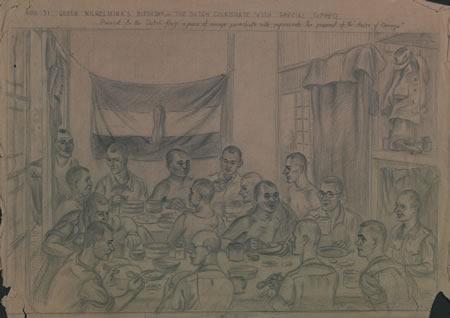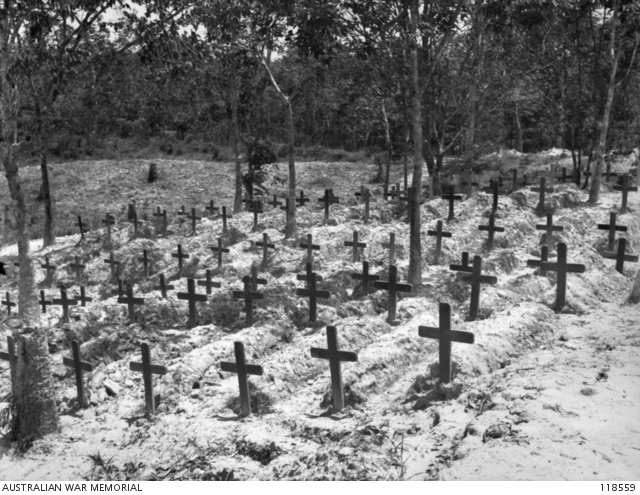Allies in adversity, Australia and the Dutch in the Pacific War: Dutch and Australian servicemen in captivity
In addition to the more than 100,000 Dutch civilians interned by the Japanese in the NEI, some 37,000 men were held as prisoners of war. Another 22,000 Australian soldiers were also captured in 1942, and the two groups were inevitably thrown together, particularly as working parties on the infamous Burma–Thailand Railway.
While the differing characteristics and attitudes of the two nationalities occasionally led to tension or even conflict, the shared experiences and hardships served to bind the men together, and, in general, relations between the Dutch and Australians were good.
By the end of the war, some 8,000 Dutch and just over 8,000 Australian prisoners of war had died of disease, starvation or ill-treatment in Japanese hands.
Allied prisoners of war at a staging camp on the Burma–Thailand Railway in 1943
The graves of British, Dutch, and Australian prisoners of war at Lintang Barracks, Kuching, Sarawak, immediately after the war.

Queen Wilhelmina was the symbol of her nation’s resistance to the invaders, and her birthday was a significant event for the Dutch population. Lieutenant Colonel William Jeater, commanding officer of the 2/20th Battalion, AIF, was invited by Dutch inmates at Changi to attend a “coffee party” on 31 August 1944, in honour of the Queen Wilhelmina’s 64th birthday.

Geoff Tyson, The Dutch celebrate Queen Wilhelmina’s birthday with a special supper (1945, pencil on paper, 25.9 x 35.6 cm).
Many prisoners of war tried to make their lives more normal by observing special occasions and national days. Even late in the war, Dutch inmates at Omine, a coal mining labour camp in Japan, made an effort to celebrate Queen Wilhelmina’s 65th birthday with a special supper.

